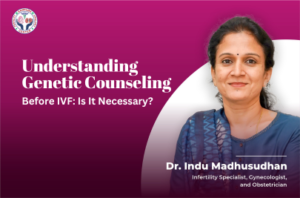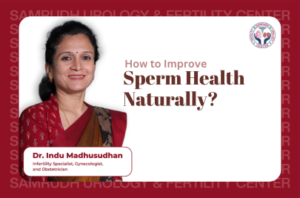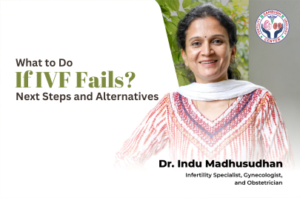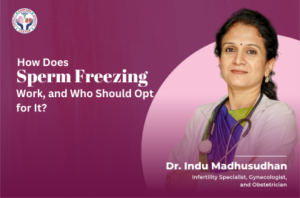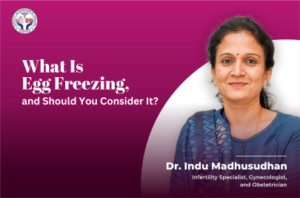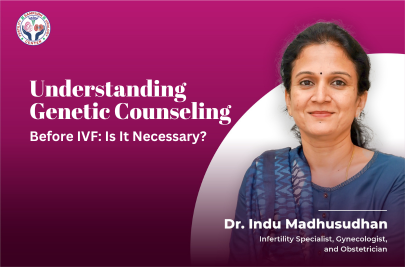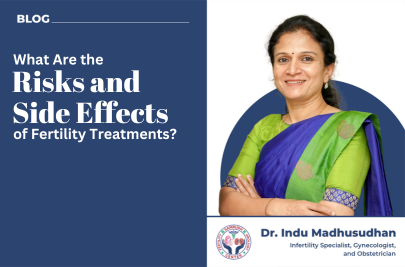Understanding Fertility Treatments: Benefits vs. Risks
Fertility treatments, such as IVF, IUI, egg freezing, and hormonal therapy, have helped countless couples conceive. However, like any medical procedure, they come with certain risks and side effects that patients should be aware of.
At Samrudh Fertility and Urology Centre in Bangalore, Dr. Indu Madhusudan ensures that every patient is well-informed about the potential risks and ways to minimize them.
Common Risks and Side Effects of Fertility Treatments
1. Ovarian Hyperstimulation Syndrome (OHSS)
- A condition caused by excessive response to fertility medications used in IVF.
- Symptoms include bloating, abdominal pain, nausea, and, in severe cases, blood clots.
- Prevention: Adjusting medication doses and careful monitoring by an experienced fertility specialist.
2. Multiple Pregnancies (Twins, Triplets, or More)
- Fertility treatments like IVF and IUI can increase the chances of twins or triplets.
- Risks include preterm labor, low birth weight, and pregnancy complications.
- Prevention: Single embryo transfer (SET) can reduce the risk of multiple pregnancies.
3. Ectopic Pregnancy
- A rare but serious condition where the embryo implants outside the uterus, usually in the fallopian tube.
- Symptoms include severe pelvic pain and bleeding.
- Early detection through ultrasounds is crucial to avoid complications.
4. Emotional and Psychological Stress
- The fertility journey can be mentally and emotionally challenging.
- Many couples experience anxiety, depression, and relationship strain.
- Counseling and support groups can help manage emotional stress.
5. Financial Costs and Uncertainty
- Fertility treatments can be expensive and may require multiple cycles.
- Success rates vary depending on age, health conditions, and treatment type.
- Consulting a reputed fertility expert like Dr. Indu Madhusudan can help plan a cost-effective approach.
6. Medication Side Effects
- Fertility drugs may cause:
- Hot flashes, mood swings, bloating, and headaches.
- In rare cases, allergic reactions.
- Regular monitoring can help adjust medications and reduce side effects.
7. Risks Associated with Egg Retrieval and Embryo Transfer
- Egg retrieval is a minor surgical procedure but may cause infection or bleeding.
- Embryo transfer has minimal risks but requires careful post-procedure rest.
How Does Sperm Freezing Work?
The sperm freezing process includes the following steps:
- Semen Collection – A sample is collected via masturbation or testicular biopsy (if needed).
- Semen Analysis – The sperm sample is evaluated for motility, count, and morphology.
- Cryopreservation – The sample is mixed with a cryoprotectant solution to prevent damage.
- Freezing and Storage – Sperm is stored at -196°C using liquid nitrogen for long-term preservation.
- Thawing for Future Use – When needed, the sperm is thawed and used for assisted reproductive techniques like IVF or IUI.
How to Minimize Risks?
- Choose an experienced fertility specialist like Dr. Indu Madhusudan.
- Opt for personalized treatment plans based on your medical history.
- Follow all prescribed medications and lifestyle recommendations.
- Undergo regular monitoring to prevent complications.
- Seek emotional support when needed.
Conclusion
Fertility treatments offer hope to couples struggling with infertility, but understanding the risks is essential. With expert guidance from Dr. Indu Madhusudan at Samrudh Fertility and Urology Centre, patients can navigate their fertility journey safely and confidently.

